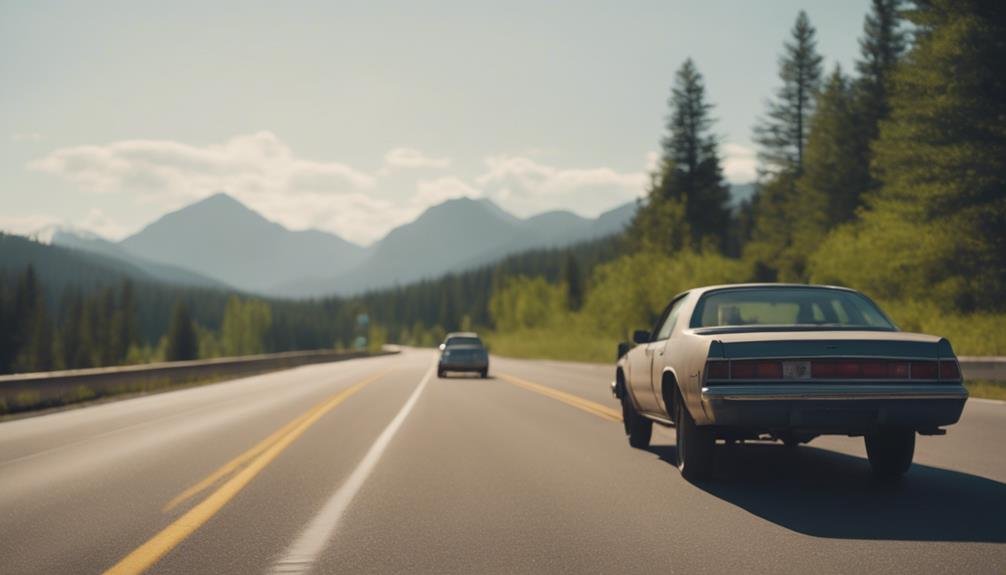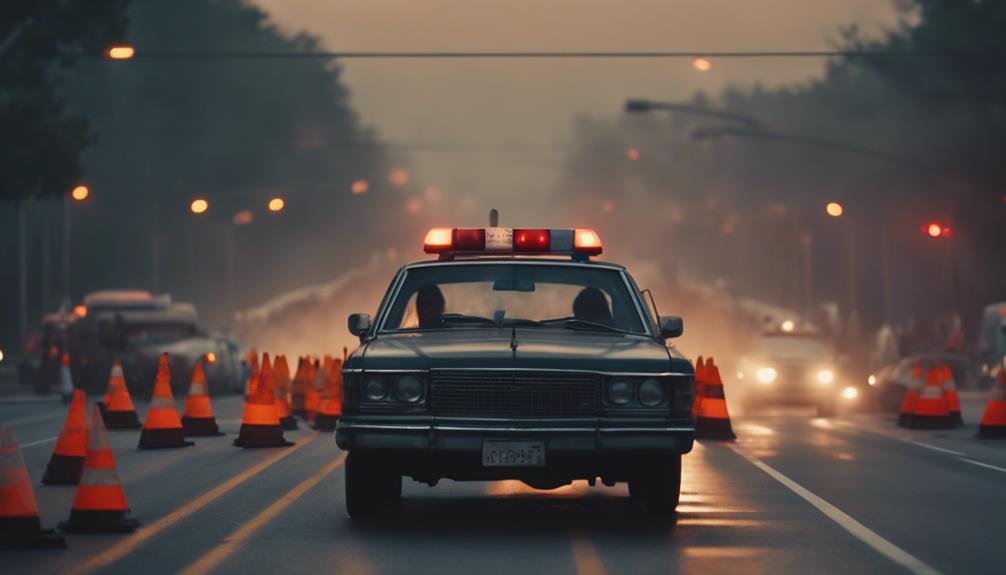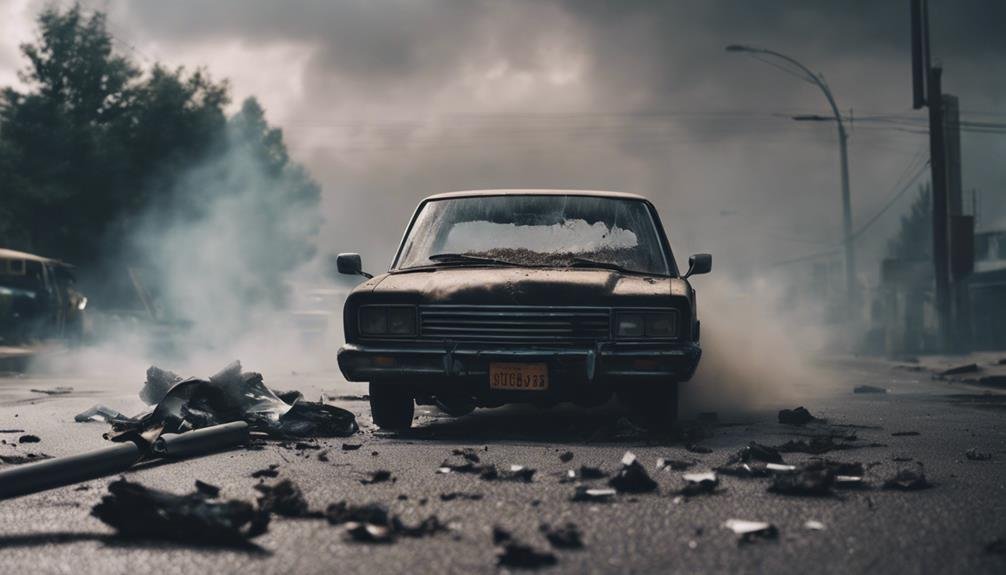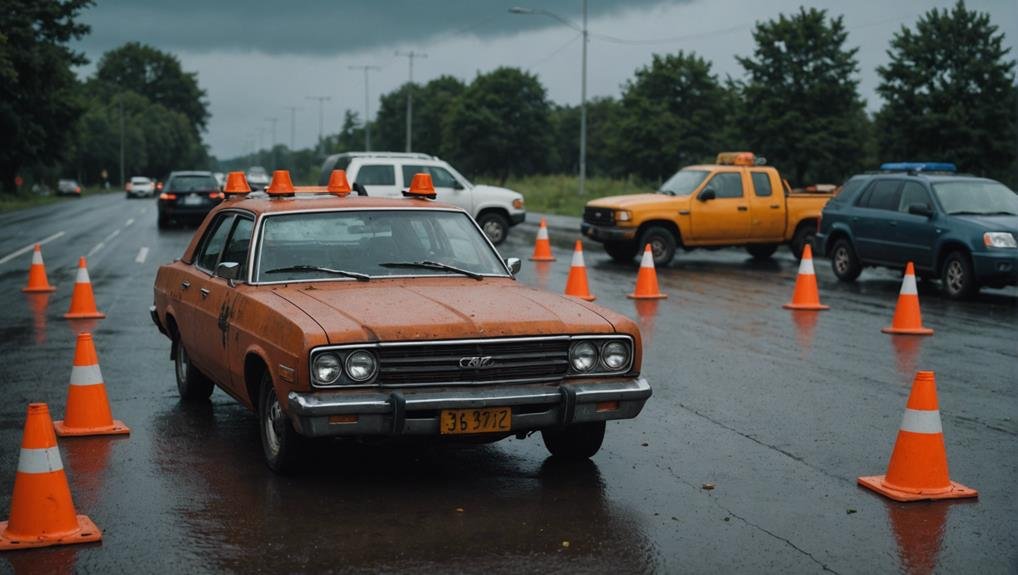When your car becomes a hazard on the road, prioritize safety by immediately turning on hazard lights, slowing down gradually, and moving to a safe location, like the shoulder, to minimize risks. Use brightly colored flags or paper, and keep dome lights on in dark conditions to signal for help. Communicate with other drivers by displaying hazard lights, flags, or paper, and stay inside the vehicle for safety. Prepare for professional help by keeping emergency contact numbers handy and researching trusted mechanics in advance. By following these steps, you'll be better equipped to handle the situation, and there's more to learn about staying safe on the road.
Key Takeaways
- Turn on hazard lights immediately to alert other drivers and prevent accidents.
- Move to a safe location, such as the shoulder, to minimize risks and prevent further hazards.
- Use distress signals like brightly colored flags or paper to signal for help.
- Stay calm and focused, and prioritize safety to prevent harm to yourself and others.
- Prepare for professional help by keeping emergency contact numbers handy and researching trusted mechanics in advance.
Safety Precautions on the Road
When your car becomes a hazard on the road, your priority should be to guarantee your safety and the safety of others by taking immediate action.
Make sure to turn on your hazard lights immediately to alert other drivers and reduce the risk of accidents.
If possible, safely move to the shoulder to avoid obstructing traffic and ensure your safety.
If you're unable to reach the shoulder, slow down gradually with your hazard lights on to signal distress.
Avoid maneuvering through traffic to reach the side of the road, prioritizing safety foremost.
Keep in mind that your goal is to make it to a safe location where your car can receive the necessary repairs to run smoothly again.
If you're not near an auto repair shop, wait for assistance to arrive, keeping your dome lights on in dark conditions for increased visibility.
Signaling for Help Effectively
To signal for help effectively, flip your hazard lights on immediately, as this universally recognized distress signal alerts other drivers to exercise caution and potentially sends help your way. This is the most important step in signaling for assistance, as it clearly communicates to others that you're experiencing car trouble.
However, if your hazard lights aren't functioning, don't panic – you have alternative options. Displaying a brightly colored flag or piece of paper can serve as a makeshift distress signal, grabbing the attention of passing drivers. Also, keeping your dome lights on in dark conditions can make your vehicle more visible to others, increasing the likelihood of getting noticed.
Having contact details for trusted towing services readily available can also expedite assistance during a car hazard situation. Additionally, consider utilizing emergency roadside assistance services like AAA for prompt help when dealing with a car hazard.
Moving to a Safe Location

Move your car to a safe location, such as the shoulder of the road, as quickly and safely as possible to minimize the risk of further hazards or accidents. This is essential because your car is now a hazard, and you need to take immediate action to prevent further risks.
When moving to a safe location, keep the following tips in mind:
- If possible, try to reach the shoulder of the road to avoid obstructing traffic flow.
- If you can't reach the shoulder, gradually slow down with your hazard lights on to indicate a problem.
- Avoid attempting to navigate through traffic to reach the side of the road, as this can be dangerous.
Communicating With Other Drivers
Alerting other drivers to the hazard your car has become is critical, and you can do this by using hazard lights, flags, or other signals to convey your distress. When your car becomes a hazard, it's important to communicate with other drivers to avoid potential accidents. Here are some ways to do so:
| Method | Description |
|---|---|
| Hazard Lights | Use your car's hazard lights to alert other drivers, especially in low-visibility conditions. |
| Flags or Paper | Place a brightly colored flag or paper outside your vehicle to signal distress, especially if your hazard lights fail. |
| Dome Lights | Keep your dome lights on in dark conditions to increase visibility. |
| Staying Inside | Stay inside your car, especially on highways, to ensure your safety while waiting for help. |
| Preparing Ahead | Keep brightly colored flags or paper handy in case your hazard lights fail, making sure you're prepared for any situation. |
Protecting Yourself and Others

When your car becomes a hazard, your priority should be protecting yourself and others from potential harm. In such situations, it's important to take immediate action to minimize risks.
To guarantee your safety and the safety of others, follow these vital steps:
- Turn on your hazard lights immediately to alert other drivers and reduce the risk of accidents.
- If your hazard lights aren't working, use brightly colored flags or paper to signal distress.
- Keep your dome lights on in dark conditions to increase visibility to other drivers.
Preparing for Professional Help
With a car hazard looming, it's crucial that you're prepared to call in the professionals, having essential contact numbers and trusted resources at your fingertips to expedite the rescue process.
Keep emergency contact numbers for towing services and trusted mechanics readily available, so you can quickly get the help you need. It's also a wise idea to research reputable auto repair shops in advance, ensuring your car is taken to a reliable location for diagnosis and repairs.
Consider joining services like AAA for breakdown assistance, which can provide you with reliable support during car hazards. Having these resources at your disposal will help you stay calm and focused, even in the midst of a stressful situation.
Minimizing Further Damage

How can you prevent your stranded vehicle from becoming an even bigger hazard on the road?
When your car breaks down, it's important to take immediate action to minimize further damage and promote safety.
If possible, move your car to the side of the road to avoid obstructing traffic flow and reduce the risk of further accidents. This simple step can prevent a multitude of problems, including additional collisions, injuries, and even fatalities.
Here are some important steps to take:
- Turn on your hazard lights to alert other drivers of your vehicle's presence as a hazard on the road.
- If you're unable to move your car, activate the emergency brake to prevent it from rolling and causing additional damage.
- Place warning triangles or flares behind your vehicle to provide additional warning to approaching drivers and improve safety.
Frequently Asked Questions
What Does It Mean When a Car Is on Hazard?
When you see a car with its hazard lights on, it means the driver is signaling a problem, warning others to be cautious, as they're likely stranded, broken down, or obstructing traffic, and need extra space and attention.
How Long Can a Car Last With Hazards On?
You're wondering how long your car can last with hazards on – the answer is, it depends on the battery, but generally, it can drain in as little as 24 hours if left on continuously.
Is It Okay to Drive With Hazard Lights On?
You shouldn't drive with hazard lights on, as it can confuse other drivers and obstruct emergency responders. Instead, use them only when stopped or moving slowly, and never as a substitute for proper signaling or communication.
How Do You Turn off a Hazard Car?
You'll find the hazard light button on your dashboard or steering column; press it once to turn off the flashing lights, or try turning off the engine, and if that doesn't work, consult your owner's manual.
Conclusion
When your car becomes a hazard, stay calm and prioritize safety.
By following the steps outlined above, you'll minimize risks to yourself and others.
Remember to signal for help effectively, move to a safe location, and communicate with other drivers.
Prepare for professional help and take steps to prevent further damage.
By being proactive and informed, you'll navigate this stressful situation with confidence, ensuring a safe and efficient resolution.
